Angle grinders are arguably the most versatile power tools you will ever have in your toolbox. They are also the most overlooked by handymen at home. Most people take them for heavy construction tools used only in workshops, garages, or auto repair shops, but angle grinders are also perfect for you need to do a wide range of applications, including cutting, grinding or polishing of metal, stone or ceramic tiles around your home.
Nowadays, you get to select between a cordless, corded, and even air-powered grinder; however, since these tools are likely to be exposed to hard conditions, it’s important that you find a grinder with enough power to support your particular need. You should also look at the arbor size, rpm, precision, and durability.
There are many poorly crafted grinders out there to watch out for. These types would pose as the cheaper alternative but will wear or break down soon. To save you from the heartbreak, we have compiled a list of only the best angle grinders out there today.
Top 10 Angle Grinders Of 2020 Reviewed
1. DEWALT DWE4011
The Dewalt DWE4011 is another 4 1/2-inch angle grinder with a 7.0-Amp AC/DC motor. The max horsepower is 1.14 hp and the max watts output is 850 watts. It also features the One-Touch Guard so you don’t need a tool to position the guard. The quick-change wheel release lets you quickly switch between different wheels without the need for a tool as well. And the side handle can be mounted on both sides for better control.
It has a low profile gear case that allows for a comfortable grip and easy access to tight spaces. And the 5/8-inch-to-11-inch spindle thread makes this compatible with a lot of 4-1/2-inch accessories. However, like some of our other picks, this model does heat up quickly. It doesn’t come with a paddle switch. And you don’t get any wheels or discs with your purchase.
Pros:
- Ergonomic design
- One-Touch Guard
- Very high speed
Cons:
- No paddle switch
- No wheels included
- Heats up quickly
2. PORTER-CABLE PC60TAG
The Porter-Cable PC60TAG is one of the most popular angle grinders for DIYers. It features a 6-amp motor with a 4 1/2-inch wheel size and 11,000 rpm and can easily perform a wide variety of jobs from cutting metal to finish surfaces, can be used for tuckpointing. The durable cast metal gear case ensures durability while the tool-free rapid release guard enables you to quickly remove the guard and align it to direct the spark and debris path away from you.
Another thing that stands out with this model is the fact that you can mount the side handle in 3 different positions which provides you with more control. However, we would love it even more if it came with a case for storage. It doesn’t come with a cut-off guard so you will not be able to use cut-off wheels straight out of the box. And the spindle lock can be hard to engage.
Pros:
- Perfect for most DIY tasks
- 3-position side handle
- Lightweight
Cons:
- No case for storage
- No cut-off guard included
- Spindle lock can be hard to engage
3. Makita 9557PBX1
The Makita 9557PBX1 is a much more powerful angle grinder with its 7.5 amp motor. The unit is quite compact with only a 2 1/2-inch barrel grip and weighing only 4.5 lbs. This power tool features an AC/DC switch so you can use it with an alternative power source if necessary.
It also comes with a lock-on/off feature which allows you either use it as a deadman’s switch or to keep the grinder going without keeping your finger on the trigger. Aside from the angle grinder, you also get grinding wheels, an extra diamond wheel, and a carry case. The best feature is the zig-zig varnish that ensures the dust and debris don’t touch the motor and metal gears, prolonging your tool’s life. However, the case doesn’t seem like it’s going to last long. It heats up quite a bit. And it’s made in China.
Pros:
- Lock-on/off feature
- Zig-zag varnish
- AC/DC switch
Cons:
- The case feels flimsy/cheap
- Heats up quick
- Made in China
4. DEWALT DWE402K
The Dewalt DWE402K is another 4 1/2-inch angle grinder. But unlike the previous two, this one has several features that make it stand out. It comes with an extra powerful 11-amp AC/DC 11,000 RPM motor. It features a dust ejection system to keep the motor and gears protected from dust and debris. Its low-profile gear case enables you to access tight spaces. And it has a One-Touch Guard that can be rotated 360 degrees so you can control the direction of the spark path.
The Quick-Change wheel release lets you switch wheels without using any tools. And the paddle switch with safety lock-off prevents the unit from getting started accidentally. However, it is much heavier compared to the other two picks. 6 pounds may not be much but over time, it’s going to feel quite heavy in your hand. Also, this doesn’t come with any wheels or discs. Just the 2-position side handle and the guard. In addition, the guard that comes with this angle grinder is not for use with a cutting wheel. You’ll need to purchase a separate guard for that.
Pros:
- One-Touch Guard
- Dust ejection system
- Paddle switch
Cons:
- Heavy
- No wheels included
- Does not include a proper guard for a cutting wheel
5. Hitachi G12SR4
Hitachi G12SR4 is a 6.2 AMP 4 1/2-inch angle grinder. It features a spindle lock as well as a trigger lock-on for continuous use. Added safety features include a left-mounted slide switch with the quick-off feature. The forward-canted side handle can be mounted in two positions to provide additional control whether you’re left-handed or right-handed. And at 4 lbs, this baby is lightweight but still heavy enough to provide balance while you wield the tool.
As an added bonus, this angle grinder comes with a case, a spanner wrench, and 5 grinding wheels. For the money, you really get a lot of bang for your buck. However, we did notice that it gets hot pretty quickly. And the on/off switch sticks a bit.
Pros:
- Comes with a carrying case and 5 wheels
- Lightweight
- Forward-canted side handle
Cons:
- Runs hot pretty fast
- On/off button sticks at times
6. Black & Decker 7750
The Black + Decker 7750 is a 4 1/2-inch angle grinder that features a 5.5-amp motor with a speed of 10,000 RPM. It has a convenient slide switch, a spindle lock, and a two-position handle. Compared to all our previous picks, this one has a less powerful motor and doesn’t offer much more than the basic.
The rear end of the grinder is also a bit on the bulky side which would not provide a secure and comfortable grip to people with small hands or short fingers. It’s even more expensive than some of our other picks. So, why is it here? Well, for a basic angle grinder, it really does its job. It doesn’t overheat. It has performed pretty well when used on DIY projects. And it is made by a reliable brand. Sometimes, you can’t really ask for more than just that.
Pros:
- Reliable brand
- Good performance
- Doesn’t overheat
Cons:
- Rear body is bulky
- Less power and features compared to other similarly priced models
- Does not come with wheels
7. Bosch 1375A
The Bosch 1375A is a very lightweight and compact angle grinder, weighing at only 3.75 lbs. It comes with a 6-amp motor with a no-load speed of 11,000 RPM. It has a two-position, angled side handle and a 5/8 In. to an 11-inch spindle which makes this compatible with a lot of accessories.
What we love about this Bosch model is the fact that it comes with Bosch’s Service Minder Brush System which ensures the tool doesn’t continue working when preventive maintenance is required. It comes with a lock-on slide switch. And the epoxy coating and the sealed switch ensures that the unit is protected from dust and debris. However, some users had difficulty attaching the guard. It doesn’t come with a case. And the locking switch is hard to use.
Pros:
- Lightweight and compact design
- Service Minder Brush System
- Good performance
Cons:
- No case
- Hard to attach the guard
- Locking switch is hard to use
8. Milwaukee 2780-20
The Milwaukee 2780-20 is one of only two cordless angle grinders on our list. This uses the M18 Fuel which is great if you already have other M18 tools in your arsenal. This 4 1/2-inch grinder comes with a paddle-switch no-lock design for increased safety. It doesn’t run hot and the ergonomics are spot on.
Other highlights include tool-free accessory changes and guard adjustments, anti-vibration handle, and the POWERSTATE™ Brushless Motor. However, it will run through a 5AH battery pretty fast. The guard has a fixed position unlike what you’d usually get with much lower-priced corded models.
Pros:
- Paddle-switch no-lock design
- Tool-free accessory and guard adjustments
- Anti-vibration handle
Cons:
- Very expensive
- Runs through batteries very fast
- Fixed position guard
9. SKIL 9296-01
The SKIL 9296-01 is one of the most expensive angle grinders in the 4 1/2-inch category but that’s for good reason. It comes with a 7.5-amp motor with a speed of 11,000 RPM, paddle switch with no lock-on feature, a metal gear housing, and a vibration-reducing handle. It also boasts of tool-free guard adjustments. The side handle even has a storage area for your wrench.
We love the fact that this tool will automatically stop if you drop it or release it because that’s just a basic safety measure. And the location of the locking slide power switch is really easy to access – the bottom of the tool where your fingers are. The side handle can be mounted in 3 different positions.
However, we did notice that it’s a bit bulkier in the hand which may not be comfortable for individuals with small hands or short fingers. Have we mentioned it’s more expensive? Almost $15 more than some of our other picks and it doesn’t come with a carrying case. Certainly not deal breakers but still stuff to take note of.
Pros:
- Paddle switch with no lock-on feature
- 3-position vibration-reducing side handle
- Wrench storage
Cons:
- More expensive than other angle grinders
- Bulky rear body
- No carrying case
10. DEWALT DCG414B
The Dewalt DCG414B is our other cordless angle grinder. Unlike all of our other picks, this little baby allows you to use 4-1/2″ to 6″ wheels and has a speed of 9000 RPM. Also unlike other models, this features a kickback brake when the unit senses a pinch, stall, or bind-up event.
The electronic brake then shuts off the grinder and uses maximum force to quickly stop the wheel. And for added safety, it features a two-stage trigger so you never accidentally start the tool. With a 6.0 FlexVolt battery, you can run this tool for a good 30 minutes. However, it is heavy. The battery is not included. And it’s really expensive compared to corded models with the same capabilities.
Pros:
- Can use 4-1/2″ to 6″ wheels
- Can run for 30 minutes on a single charge
- Two-stage trigger
Cons:
- Very expensive
- Battery not included
- Heavy
How to Choose the Best Angle Grinder: the Ultimate Buying Guide
Angle grinders are not for the faint of heart. These can be dangerous when placed in the wrong hands. But if you know how to use one, you won’t find a tool that is quite as versatile. With so many abrasive heads available in the market, the possible uses of an this tool are endless.
However, just like other power tools such as the corded drills, no two angle grinders are exactly alike. There’s a huge selection available and figuring out which particular model would best serve your needs can become somewhat overwhelming, not to mention time-consuming. Well, we’ve taken the time to create a detailed guide that should help you find the angle grinder that would be perfect for just about every job you have in mind.
What is an Angle Grinder?
An angle grinder is a powerful tool that features a power source (motor, compressed air, or petrol engine) that will drive gears to rotate a disc/wheel at very high speeds. The rotating head, which holds the disc/wheel, is positioned at a 90-degree angle to the motor. The disc/wheel is typically clamped to the head by a threaded retaining ring and features a safety guard covering its rear half.
Typically, you will grip the main body of the angle grinder with one hand. A detachable side handle (either mounted on the left or right side) can be used for additional control. A trigger or switch turns the grinder on and a lock keeps the trigger pressed to prevent you from having to hold it down while you use the tool. Another lock, a spindle lock, is present to prevent the grinder from moving while you’re changing the disc/wheel.
What Can you do With an Angle Grinder?
The versatility of an angle grinder has been mentioned time and again. But what jobs exactly can it really tackle? How can you use this too? Well, with the right abrasive head, it can perform the following tasks effectively:
- remove paint, rust, dirt, dried cement
- polish painted surfaces including auto bodywork
- grind weld seams or saw cuts to produce a smoother finish
- cut pipe, screws, iron fencing, bolts, and rebar
- sharpen tools such as lawnmower blades and garden shears
- tuckpointing walls or grinding mortar
- carve wood
- cut concrete, ceramic, and stone
What are the Specs I Should be Looking at?
You’ll easily be able to judge the capabilities of an angle grinder by looking at two factors – wheel size and motor power.
Wheel Size
Wheel size allows you to see the maximum wheel diameter that can be used with the grinder. The sizes can range from 4, 4.5, 5, 6, 7, 9, and 12 inches. In general, the bigger the wheel size, the more power the tool will need to perform. Also, a larger wheel size means more surface area will be covered in a short amount of time. This is ideal for jobs where you will need to grind mortar or work with slabs and sheet materials. Typically, grinders with a wheel size in the 7″ to 9″ range are considered heavy duty and more than what any home handyman will need.
A smaller wheel size, on the other hand, is more versatile and provides you with a greater level of precision. The most common sizes, the 4-4.5 inch range, are capable enough of performing most general tasks such as sharpening blades, removing rust, and cutting metal. With a smaller tool like the PORTER-CABLE PC60TAG, you’ll find that it’s much easier to wield even if you lack experience with using a grinder.
Motor Power
There is a combination of specs you’ll need to check – horsepower, amps, wattage, and rpm.
Amps: this is the measurement of motor power that you’ll come across when looking at 4-4 ½” angle grinders. Generally, the more amps there are, the more power you’ll get. Tools that are in the 5 to 9 amp range like the Black & Decker 7750 are powerful enough to do most cutting and grinding jobs. Anything lower will not be able to handle demanding jobs. Anything higher (10 amps or above) will be too much for your DIY needs.
Horsepower: this is rarely shown with smaller angle grinders. The DEWALT DWE4011, for example, is one of the few that do. This power tool comes with a maximum 1.14 hp. You will see some heavy duty ones showing 5 hp or more which is quite a lot of power in a handheld tool.
Wattage: like amps, the more power you need, the higher the wattage your angle grinder should have. For example, a large wheel size will require more power to be effective which means it’ll need a higher wattage.
RPM: revolutions per minute is the rotational speed of the disc or wheel. Basically, this tells you how fast the wheel will spin. The funny thing about angle grinders is that the smaller it is, the higher the speed. For example, a 4½ inch grinder will have a max speed of 10000 rpm while a 9-inch grinder will typically have a max speed of 6500 rpm.
What Other Features Should I Consider?
Corded or cordless
Unless a power outlet is nowhere to be found or mobility is a priority, most professionals recommend going with a corded unit. Cordless angle grinders, just like cordless drills, tend to lose battery fast especially if you continually restart it. If you do go for a cordless unit, you’ll need to look at the battery’s charging time as well as the cost of a secondary battery pack. While a fast charge time is essential, it’s even more important that you have a spare to use while the other one is still charging. One of our picks, the Milwaukee 2780-20, will run through a 5AH battery pretty quickly. The beauty of this angle grinder is that it uses M18 fuel which is used by other M18 tools that you may already have in your shop.
Weight
A 9-inch grinder will typically weigh 12 to 16 pounds while 4 ½ inch models will usually be between 4 to 5 pounds. A lightweight model would seem the way to go but the weight of a unit is also necessary to keep the tool balanced and steady in your hand. Be wary of angle grinders that are too light as they may be made of fragile or cheap components.
Gears
Speaking of components, you’ll want the power tool to feature metal gears because they’ll be able to withstand a lot of power. Cheap angle grinders will typically have hard plastic or nylon gears.
What Safety Features Should my Angle Grinder Have?
Spindle Lock: prevents the spindle from moving while you’re changing the wheel
Soft start: reduces the kickback produced when the angle grinder is started which prevents the tool from jerking in your hand when you pull the trigger.
Safety lock: prevents the tool from getting started accidentally.
Safety clutches: if the disc jams, this will disconnect it to prevent injury.
One Last Thing…
Because angle grinders are very powerful tools, it’s extremely important that safety precautions are taken before using them. Since you’re already shopping for an angle grinder, we recommend that you add the following items to your to-buy list if you don’t have them at home:
- safety goggles
- ear defenders
- facemask
- gloves


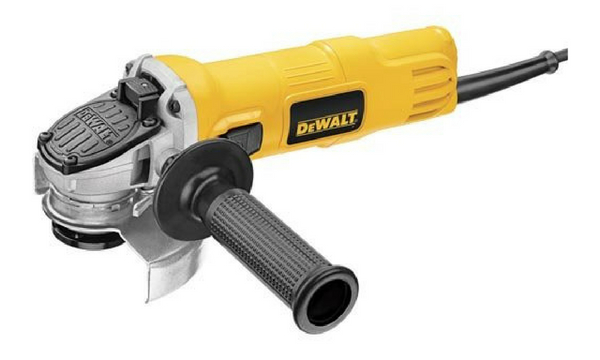
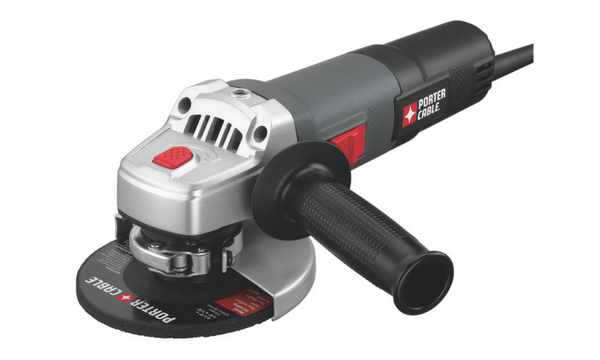
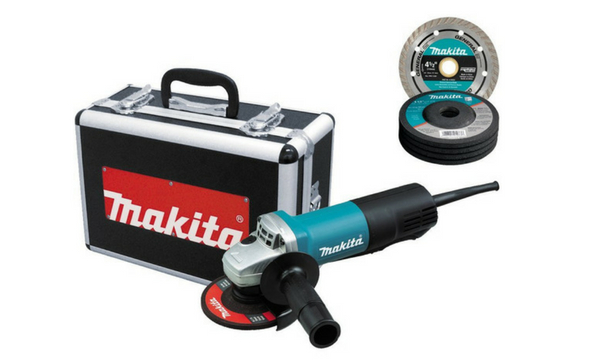
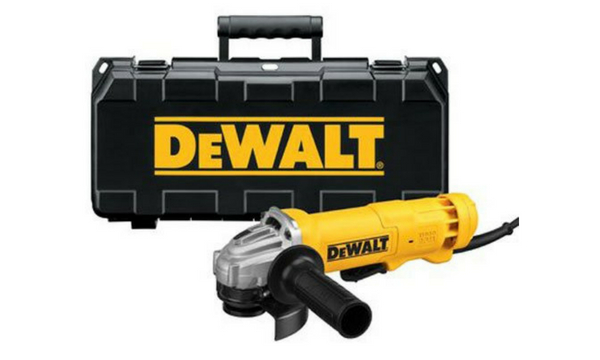
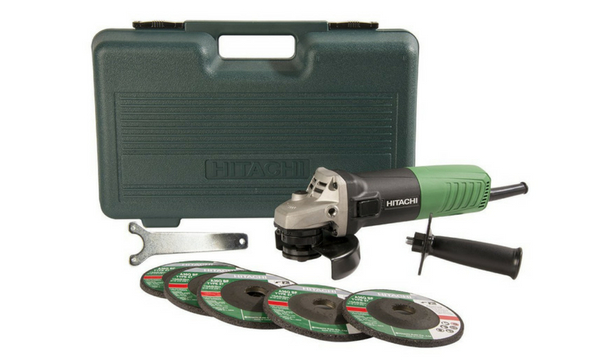
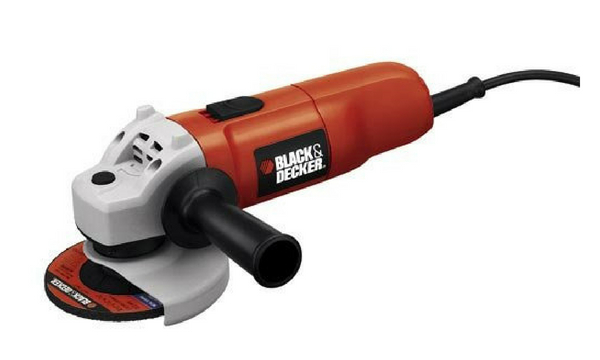
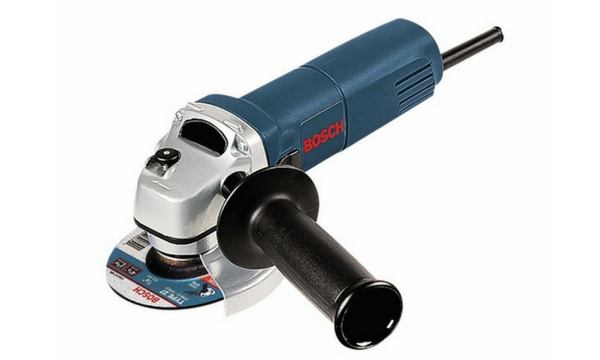
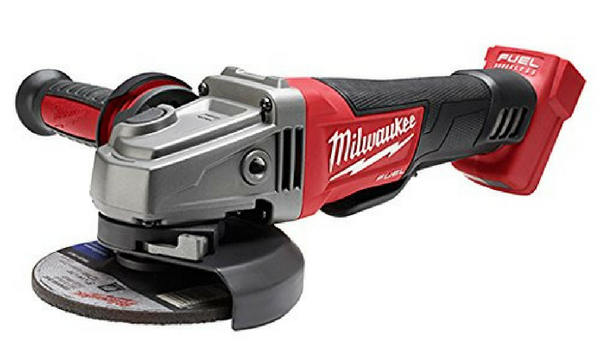
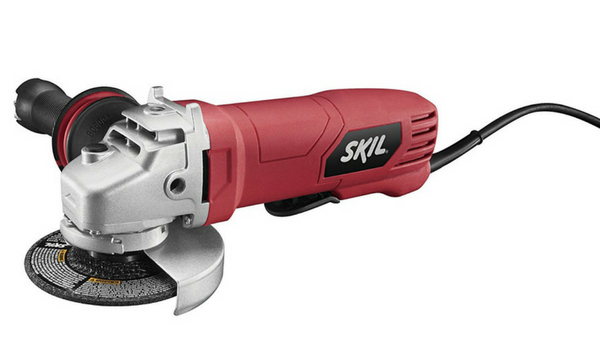
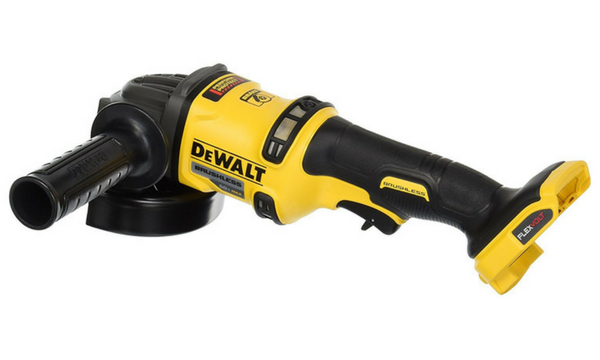
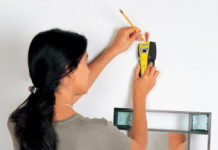
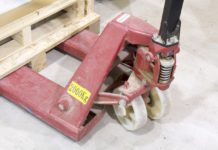

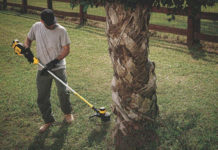
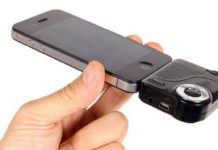






![Best Crochet Hooks for Beginners and Pros [2020 Update] best crochet books](https://www.awebtoknow.com/wp-content/uploads/2018/01/best-crochet-books-100x70.jpg)


